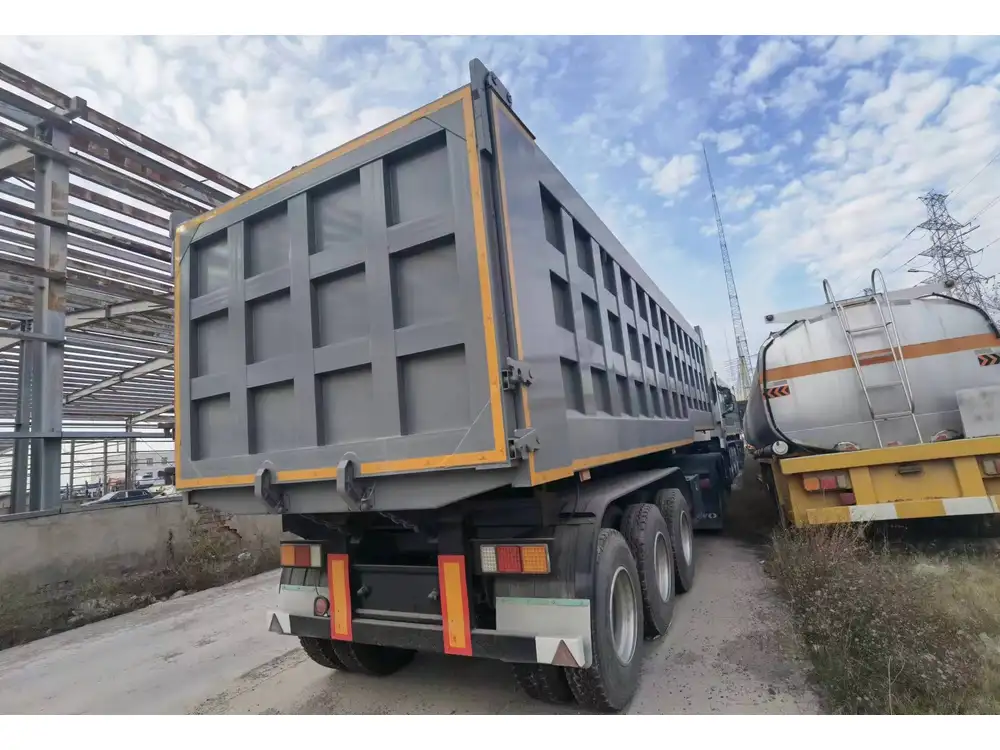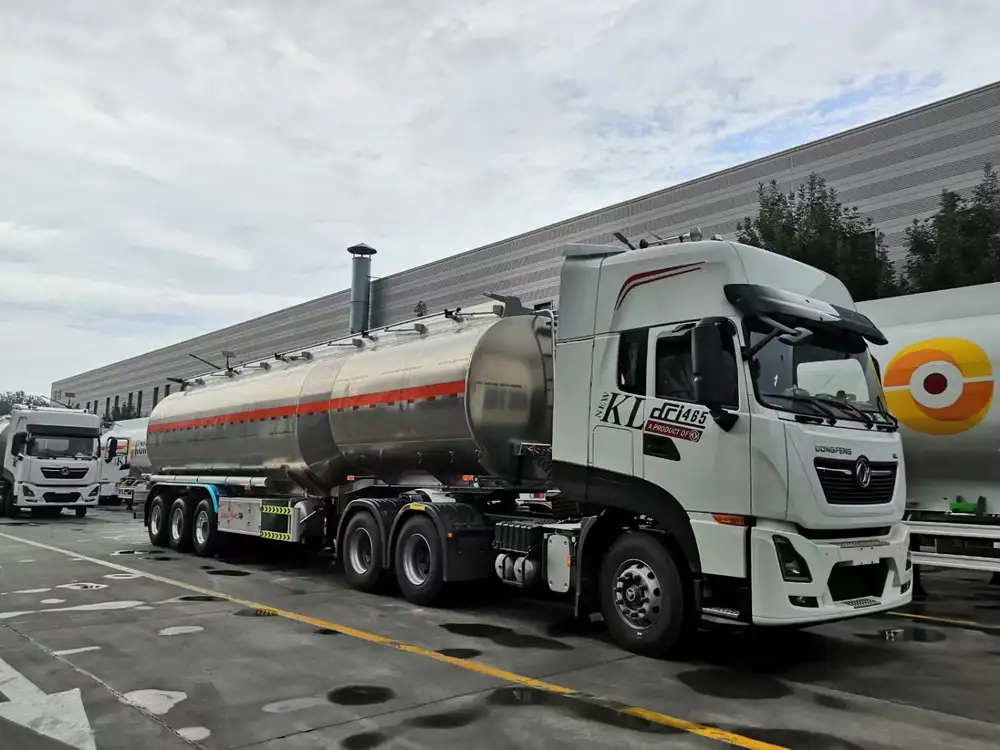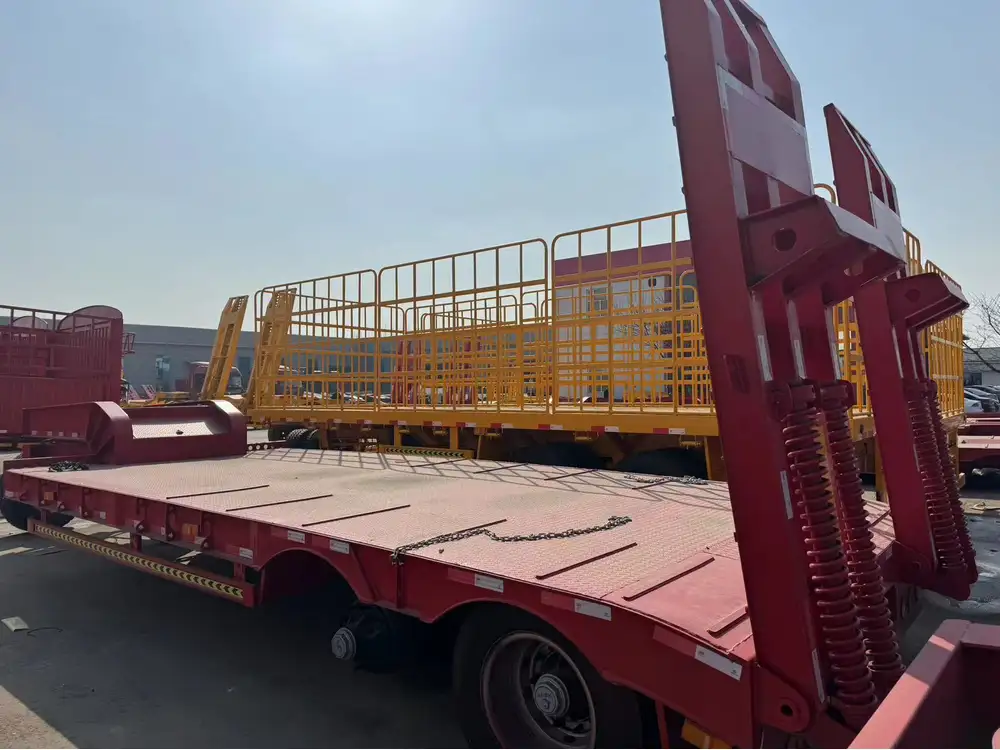Pulling a semi-trailer can be a lucrative venture for many owner-operators and businesses, but the legality of towing a repairable semi-trailer often raises questions among drivers, fleet owners, and logistics companies. In this comprehensive article, we will navigate through the intricacies of legality, best practices, and additional considerations when it comes to pulling repairable semi-trailers.
Understanding Repairable Semi-Trailers
What is a Repairable Semi-Trailer?
Repairable semi-trailers are those that have sustained damage but are still deemed suitable for use with repairs. They may have minor issues, such as cosmetic damage, or more significant deficiencies that require attention before they can be used safely. Understanding the condition of the trailer is the first step in determining whether it can be legally pulled.

Types of Damage
When evaluating whether a semi-trailer is repairable, it’s essential to categorize the type and extent of damage. Common categories include:
| Damage Type | Description | Potential Legal Issues |
|---|---|---|
| Structural Damage | Damage to the chassis or frame. | May affect safety regulations and necessitate inspections. |
| Cosmetic Damage | Scratches, dents, or paint damage. | Typically not a legal issue, unless it obscures identification. |
| Mechanical Issues | Problems with brakes, axles, or suspension systems. | Must be repaired before towing to remain roadworthy. |
| Electrical Issues | Problems with lights or braking systems. | Must be addressed, as they can lead to traffic violations. |
Legal Considerations for Pulling Repairable Semi-Trailers
Federal Regulations
The Federal Motor Carrier Safety Administration (FMCSA) oversees regulations that govern the use of semi-trailers. According to FMCSA regulations, any trailer that poses a safety risk must not be towed. It is imperative to ensure that:
- Brakes: All trailers must be equipped with functioning brake systems.
- Lights: Signal lights, brake lights, and reflectors must be operational.
- Tire Condition: All tires should be in good condition with adequate tread depth.

State Regulations
Beyond federal laws, each state has its own regulations regarding the towing of semi-trailers, especially those deemed repairable. It is vital to check with your state’s Department of Motor Vehicles (DMV) or similar authority to confirm:
- Towing Restrictions: Some states may have laws preventing the towing of semis that are not fully functional.
- Inspection Requirements: States may require inspections before allowing a repairable semi-trailer to be used on public roads.
Licensing Requirements
To legally tow a semi-trailer, drivers typically must have a valid Commercial Driver’s License (CDL). In addition, the type of trailer being towed may dictate the class of CDL required. It is crucial to ensure compliance with all necessary licensing regulations to avoid legal ramifications.
Safe Practices When Towing Repairable Semi-Trailers

Conducting Pre-Tow Inspections
Prior to towing a repairable semi-trailer, conducting a detailed inspection is non-negotiable. This includes examining:
- Frame Integrity: Ensure the trailer frame is solid without major cracks or damage.
- Brake Functionality: Check brake responsiveness before attempting to tow.
- Electrical Systems: Verify that all electrical components, including lights, are fully functional.
Utilizing Proper Equipment
The right equipment can significantly impact the legality and safety of towing a repairable semi-trailer. Consider the following:
- Towing Vehicle: Ensure the towing vehicle is rated for the weight of the trailer, including cargo.
- Safety Chains: Always use safety chains as a backup connection between the truck and the trailer.
- Towing Equipment: Use appropriate hitches and towing devices that meet or exceed manufacturer specifications.
Communication with Authorities
After confirming that a repairable trailer is roadworthy, maintain clear communication with local and state authorities when towing:
- Notify Law Enforcement: If towing a repairable trailer, especially over long distances or through multiple states, it’s wise to inform local law enforcement.
- Obtain Necessary Permits: Some jurisdictions may require permits for towing certain types of trailers, even if they are in repairable condition.

Case-by-Case Examination of Legal Considerations
Minor Repairs
Cases in which only minor repairs are necessary—such as replacing a broken light or fixing cosmetic damage—may not impede the legality of towing. However, drivers must ensure that any such issues do not affect the trailer’s overall safety.
Major Structural Repairs
Semi-trailers requiring significant structural repairs are issues that must be thoroughly addressed before towing. Engaging a certified mechanic to assess the condition of such trailers and ensuring documentation of repairs can be essential for legality.

Special Circumstances and Exemptions
Particular scenarios may offer exemptions or stipulations when towing repairable semi-trailers:
- Emergency Situations: In emergency scenarios (e.g., transporting a damaged trailer to a repair yard), laws may allow towing even if the trailer has existing damage.
- Transport to Repair Facilities: Some regions may have specific allowances for towing non-roadworthy trailers solely for the purpose of repair.
Risk of Noncompliance and Penalties
Consequences of Illegal Towing
Engaging in the illegal towing of a semi-trailer can lead to severe penalties, including:
- Fines: States may impose hefty fines for towing unsafe vehicles.
- Legal Liability: In the event of an accident, the driver may be held accountable, especially if the towing was non-compliant.
- Increased Insurance Premiums: Noncompliance can lead to increased insurance rates or difficulty acquiring coverage.

Safety Implications
Ensuring that a repairable semi-trailer is safe to tow is not just a legal requirement, but a moral one:
- Accidents: An unsafe semi-trailer can lead to catastrophic accidents, resulting in injury or loss of life.
- Reputation Risk: Businesses engaging in unsafe towing practices risk damaging their reputation and losing client trust.
Best Practices for Maintaining Compliance
Thorough Documentation
Maintaining meticulous records of all repairs and inspections performed on repairable semi-trailers is crucial. Essential documentation includes:
- Repair invoices
- Inspection reports
- Compliance certificates
This paperwork serves as proof of due diligence should any legal issues arise.

Regular Maintenance Schedules
Establishing a regular maintenance schedule ensures that trailers remain in compliance with safety regulations. Refer to industry best practices to systematize maintenance, including:
| Maintenance Activity | Frequency | Purpose |
|---|---|---|
| Brake Inspections | Every 1,000 miles | Ensuring braking efficiency |
| Tire Rotations | Every 6,000 miles | Promoting even tire wear |
| Electrical Checks | Monthly | Verifying lighting and signals |
Training Drivers for Compliance
All drivers need to be well-versed in the regulations surrounding the towing of repairable trailers. This includes training sessions on:
- Pre-towing inspection protocols
- Emergency procedures
- Understanding state and federal regulations
Conclusion
In summary, pulling a repairable semi-trailer legally hinges on a thorough understanding of both federal and state regulations, a commitment to safety and maintenance, as well as proactive communication with relevant authorities. By approaching this multifaceted issue with diligence and care, drivers and fleet owners can ensure they operate within the law while maximizing their operational capabilities. Always prioritize safety and compliance to mitigate risks and enhance the reputation of your business in the competitive logistics landscape.



